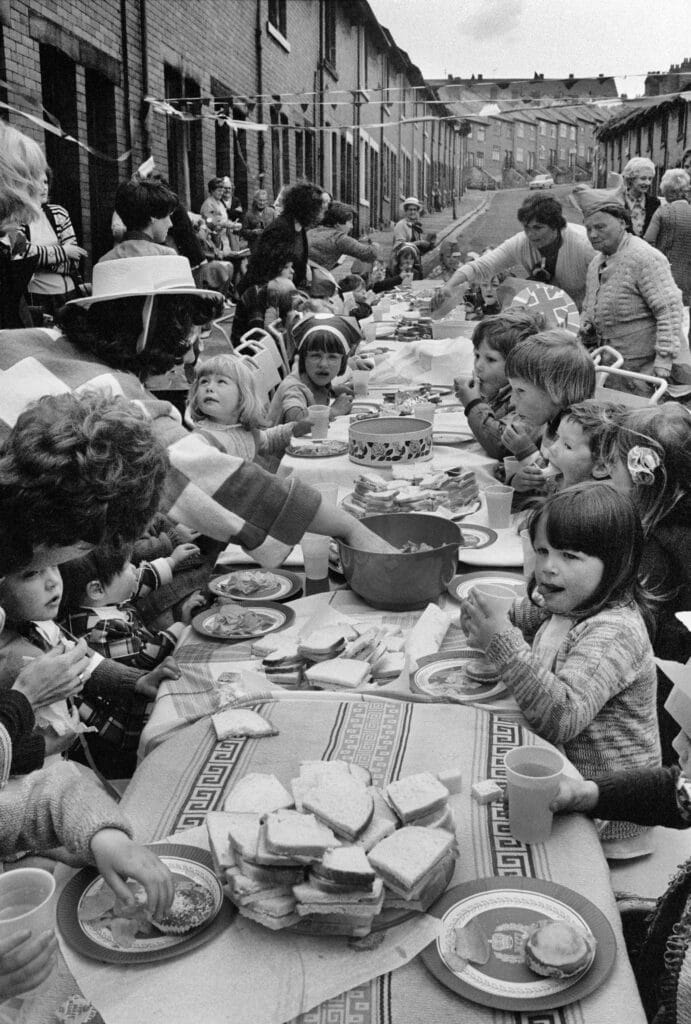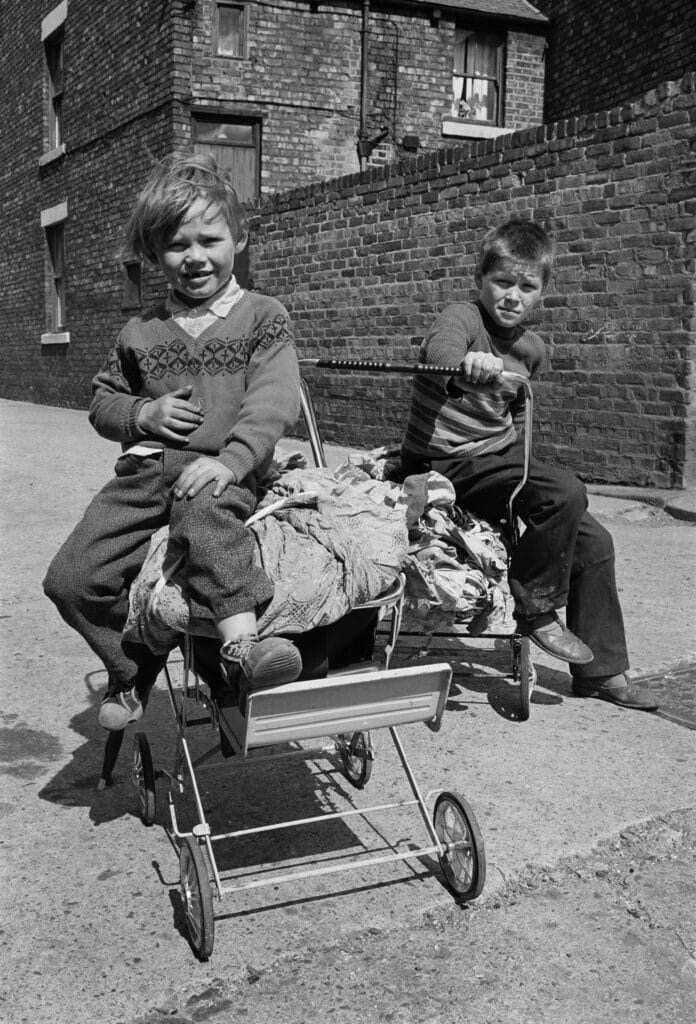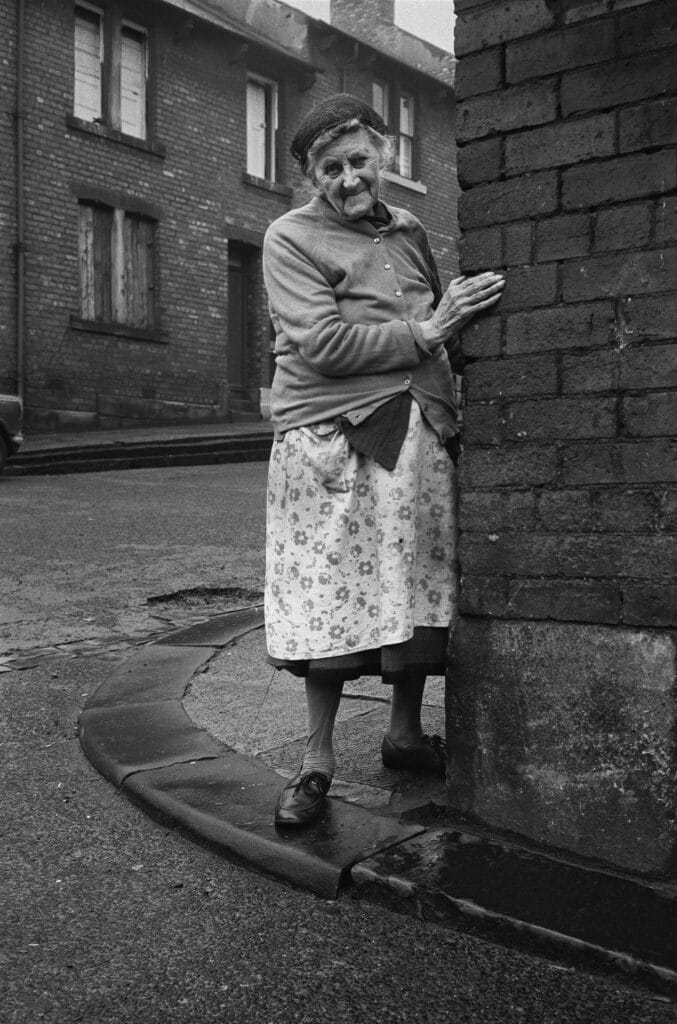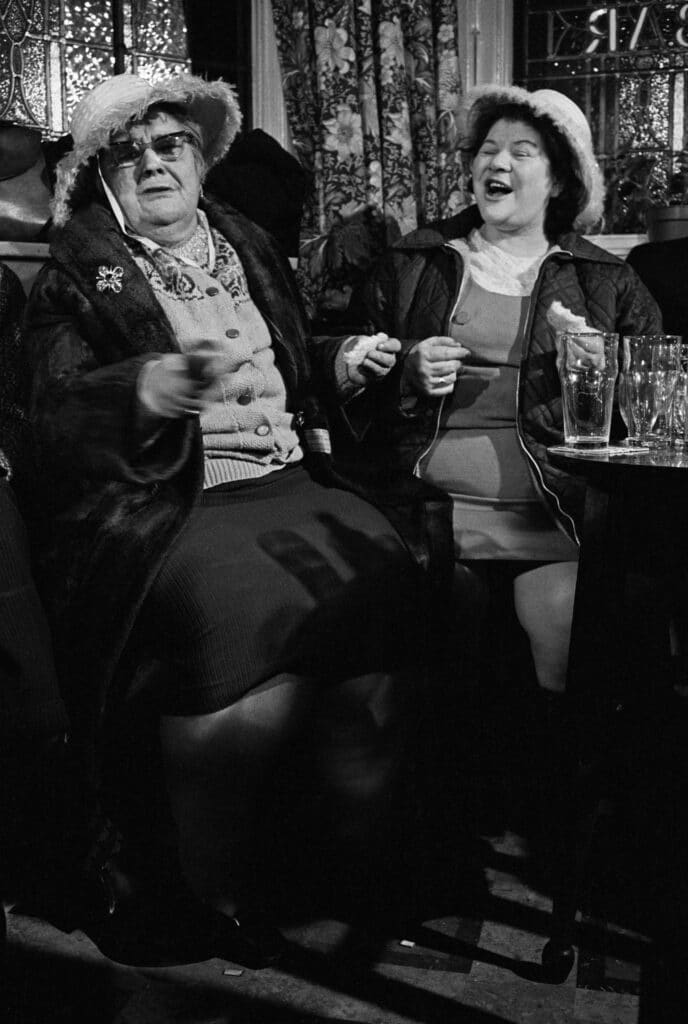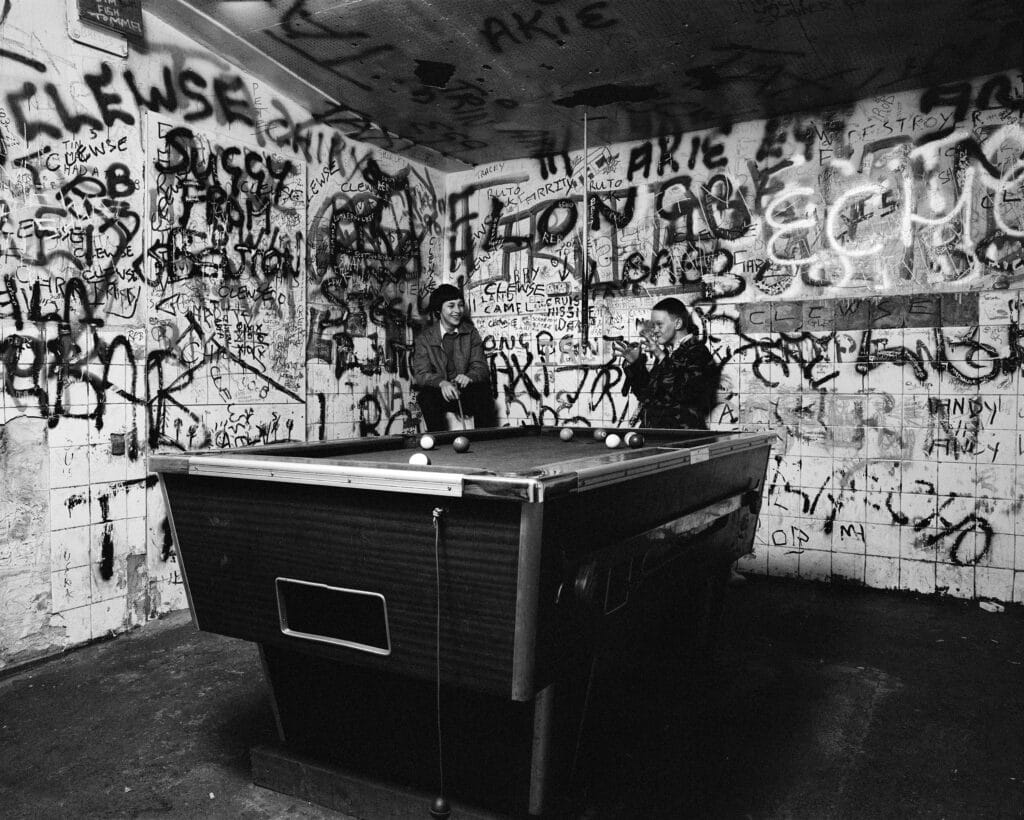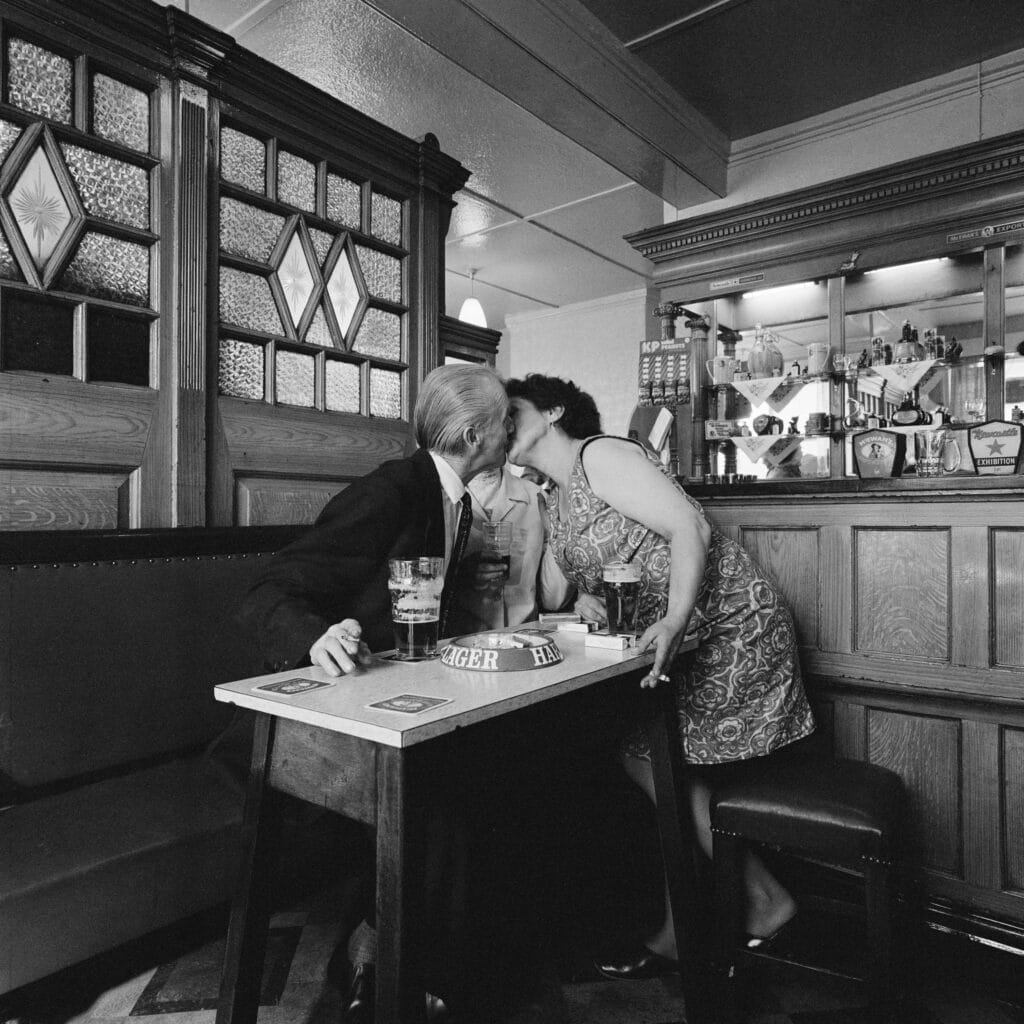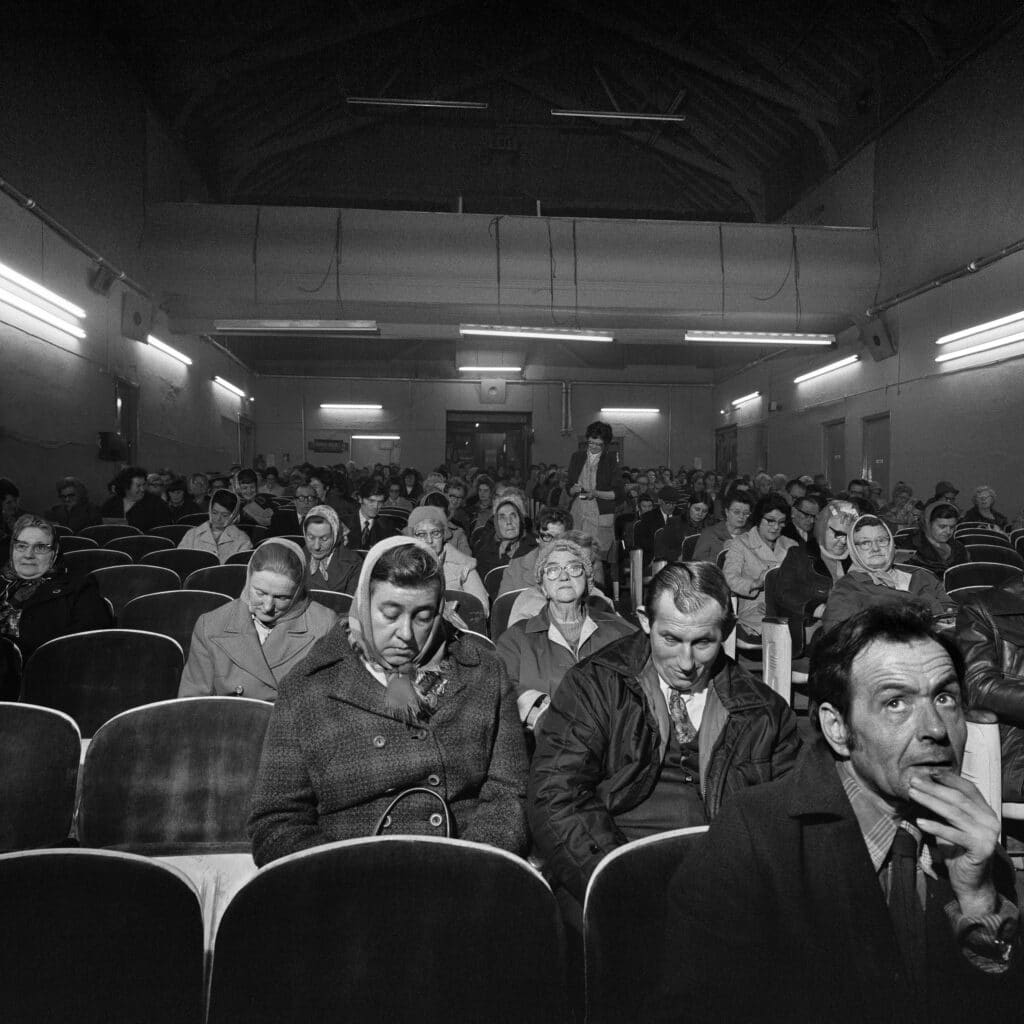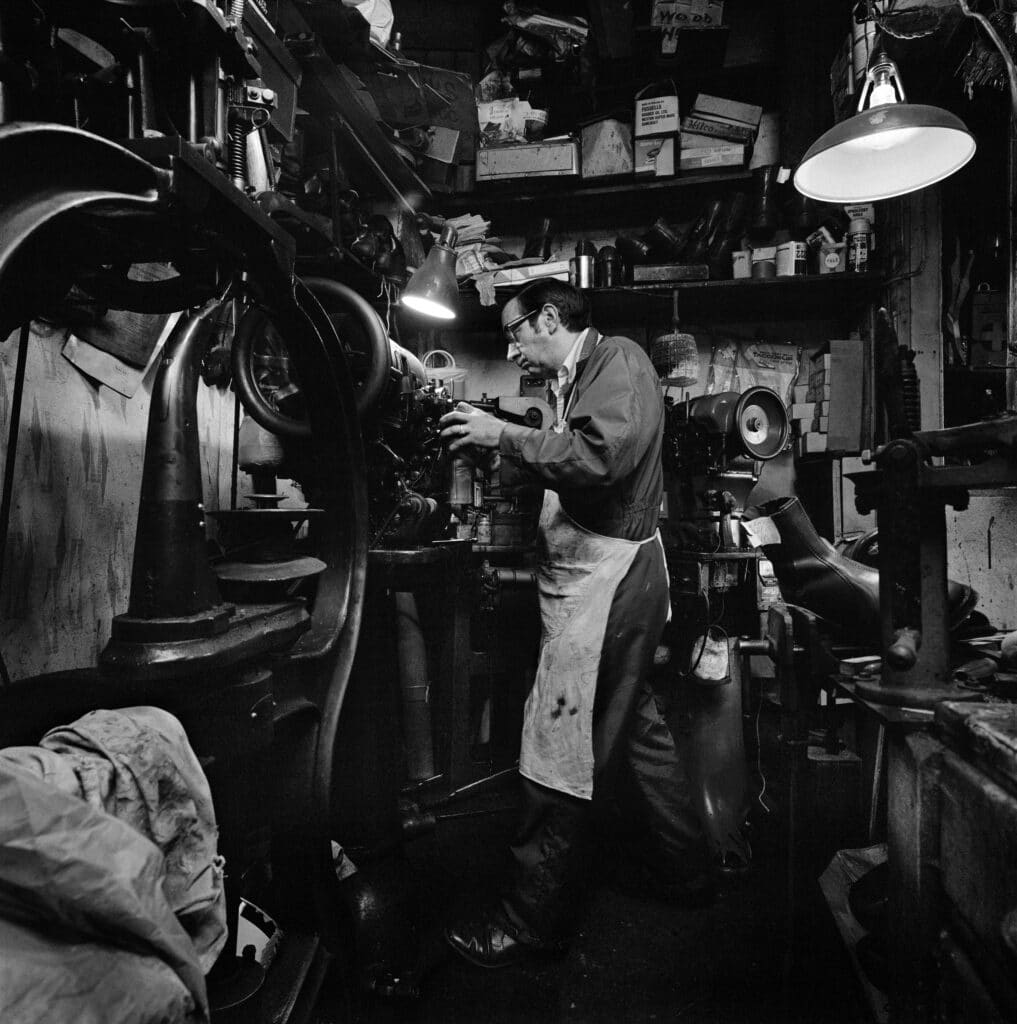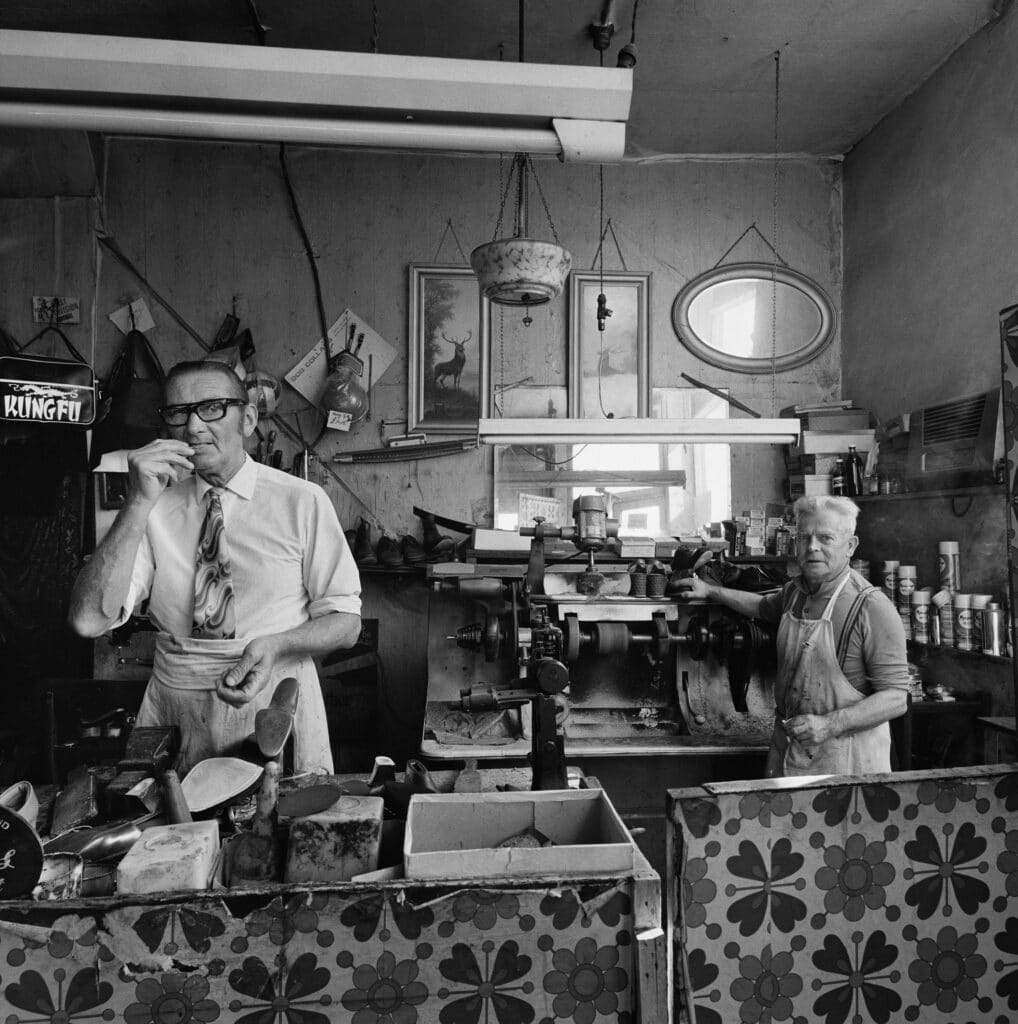Sirkka-Liisa Konttinen came to Byker in Northeast England in 1969. “Walking down Janet Street on that first, soft Saturday morning in the late autumn, I was put under a spell,” she writes in the introduction to Byker. “That spell was to last ten years…”
She came from a hometown in Finland. After a stint at film school in London, she moved to Byker, near Newcastle, in search of adventure, in search of life, in search of a home.
An affectionate portrait
And that is what she found. She was a curiosity there, a lone Finnish woman living alone in a working class community. The fact she was a curiosity didn’t escape her notice. In Byker, she notes the reactions of locals towards her.
“‘She’s left home,’ (neglecting her duty towards her parents). ‘She comes from Finland, such a beautiful place, nice and clean, and she chooses to live in Byker. (what’s the matter with her?) And a year later. ‘She hasn’t got her nets up yet. She plays the piano; she drives a van (thundering scrapheap, never seen a bucket of water), and rides a rusty bicycle (she rides anything, her!). She goes round taking photographs, and gives them away for now (is she a snoop for the ‘Dole’, or just a mug?) … A cannot understand a word of what she says either. But she’s all right – canny, aye. Poor little bairn, so far from home… And is she even married to that man…?’”
The pictures she made are of the people who spoke those words, who took her in and made her feel at home. They are quiet moments from the pubs, cafes, and streets of Byker.
The new book (a much-needed cloth-covered hardback upgrade on the previous soft cover perfect bound edition) opens with a portrait of an older woman standing on the edge of the pavement on a terrace corner. Behind her stand red-brick houses, windows shuttered (which was unusual) or possibly boarded up. The woman wears a cardigan, a pinny (for housework), and a woollen hat. Her legs are swathed in laddered tights, her feet in polished black shoes. It’s an affectionate portrait, but it has an edge to it. She is both a surveyor of all that happens in the neighbourhood and surveyed by Konttinen’s camera.
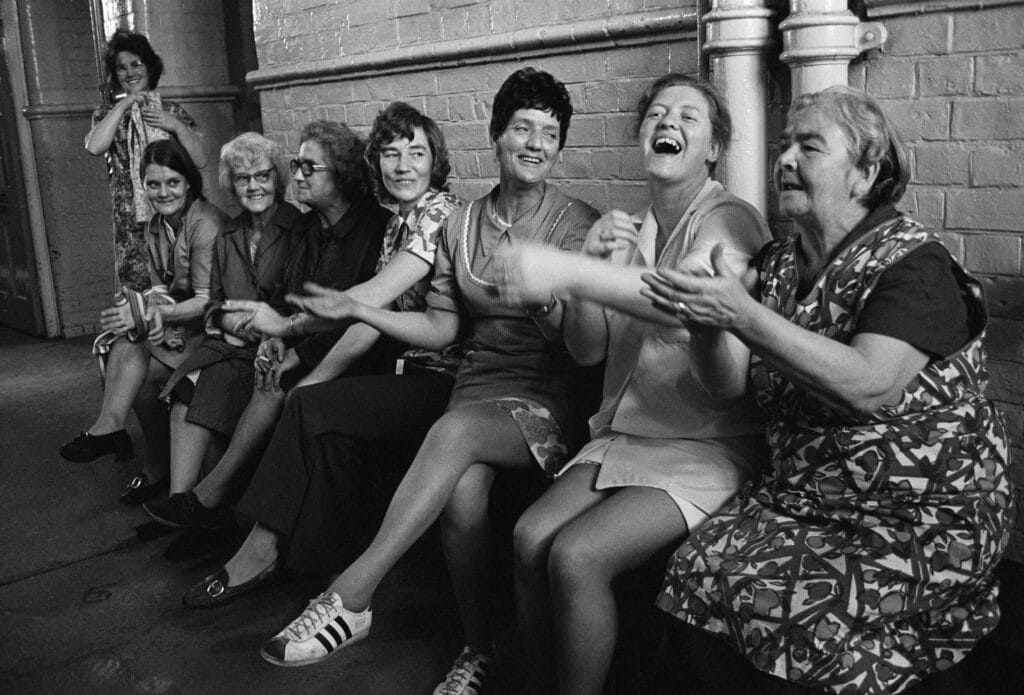
Turn the page and there are two more women, both wearing overcoats, one with a dog on a lead. It’s a regular dog, a mongrel, because that’s what people kept in those days. It sits patiently as the women talk. On the facing page is their conversation. They talk about a dog (I always thought it was a man who wandered onto the tracks!) which wandered onto the railway line, which might have been pulled onto the tracks by the passing wind of the train, who was quite ‘hefty’.
“Noo. He wasn’t that heavy, Agnes. In fact he looked fatter than he was. The coat made him look fatter an’ all… Been having fits an’ that… too finely bred, that was his trouble.’
Turn the page, and Konttinen is being watched again by a woman peering out of a window. More women appear, sitting on chairs by their front doors, putting on mascara over the kitchen sink, looking after babies on a terrace.
Women’s spaces give way to children’s spaces: the places they inhabit, the worlds they create, the opportunity that dereliction offers. Thus we see one of her most famous pictures: a group of children, mostly girls, sitting around household goods that have been flytipped onto derelict land. There’s a pram, a budgie cage, an old music center, and a television. The accompanying text discusses what you did if you didn’t have a TV, and how you could stick a Lucozade wrapper on a black and white TV to transform it into a colour one.
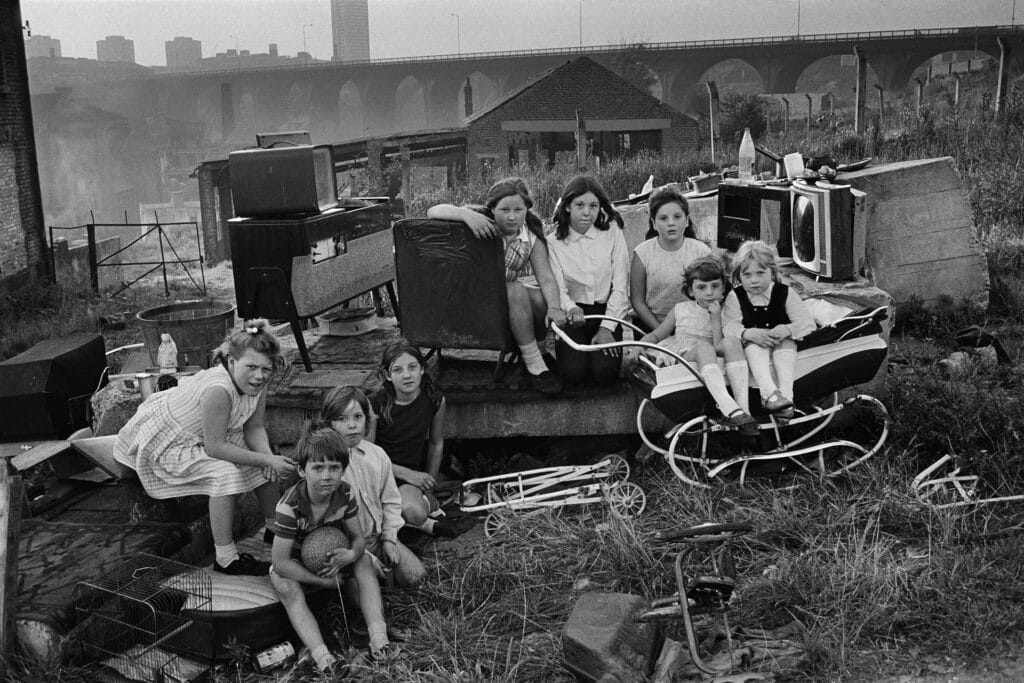
Konttinen’s image of a girl on a space hopper, her hair flying as she hops, the sequins on her dress glittering even on an overcast day, is a celebration of the joyfulness and individuality of the people who live in Byker.
The new Byker
She shows women at home washing the dog or ironing the sheets. There are bedrooms, living rooms, and pictures from the pubs and clubs. Pigeon fanciers give way to locals transforming the local cinema into a bingo hall and then, slowly but surely, the transformation, development, and destruction of the area takes hold.
Houses are ripped down and interiors exposed, entire streets looking like a war zone.
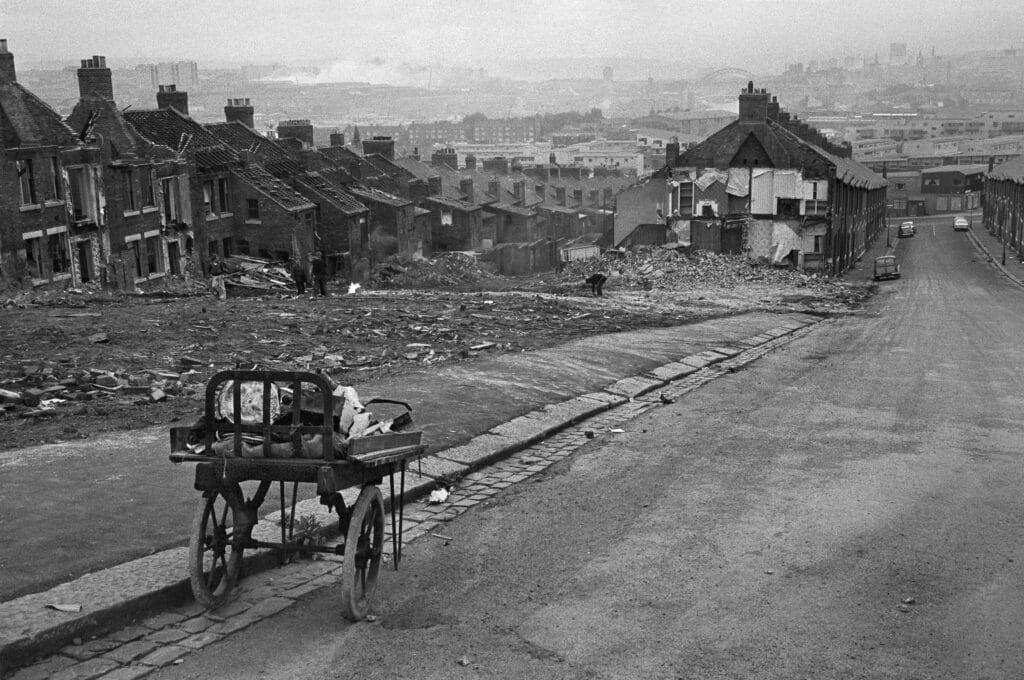
This is detailed in images that show the houses of Byker slowly being demolished. Houses are ripped down and interiors exposed, entire streets looking like a war zone. In its way, it is a war zone: piles of rubble appear, derelict buildings are emptied and scavenged for anything that might be of value. It’s a war on access to housing and communities, one that is still being waged today.
People move out, the community fragments, and the stress of life for remaining residents becomes unbearable. “‘They come in through the roof,’” writes one tenant. “‘What the planners and architects are striving for… is to keep the way of life, the same faces and families together, only housed in new surroundings,’” reads one newspaper article.
But that’s not what happened. “Over 17,000 people lived in Byker at the start of the redevelopment,” reads the afterword. “Fewer than 20 percent of them were living in the new Byker by 1976. One is only left to speculate what would have happened had the policy not been to retain the community.”
The polished doorsteps and the alleyways where children once played disappear, the interconnected geographies that Konttinen puts at the heart of her book are lost. In much the same way that Helen Levitt photographed how children inhabited the streets and public spaces of New York, Konttinen shows the value embedded within the bricks and tarmac of this built-up community. It’s a value that doesn’t have a monetary measure, but is there all the same.
The final pictures show the new Byker, the Byker the old residents have been locked out of. “It’s a different class of people in Byker now, they are never content round here. If one gets a bottle of milk, the other gets two. That’s the way they go on… if you don’t go out you are mean. ‘Make you sick, they never go out.’ And if you do go, ‘I wonder how they do it, they are never in!’ In the olden days, it wasn’t like that, but then, nobody had anything.”
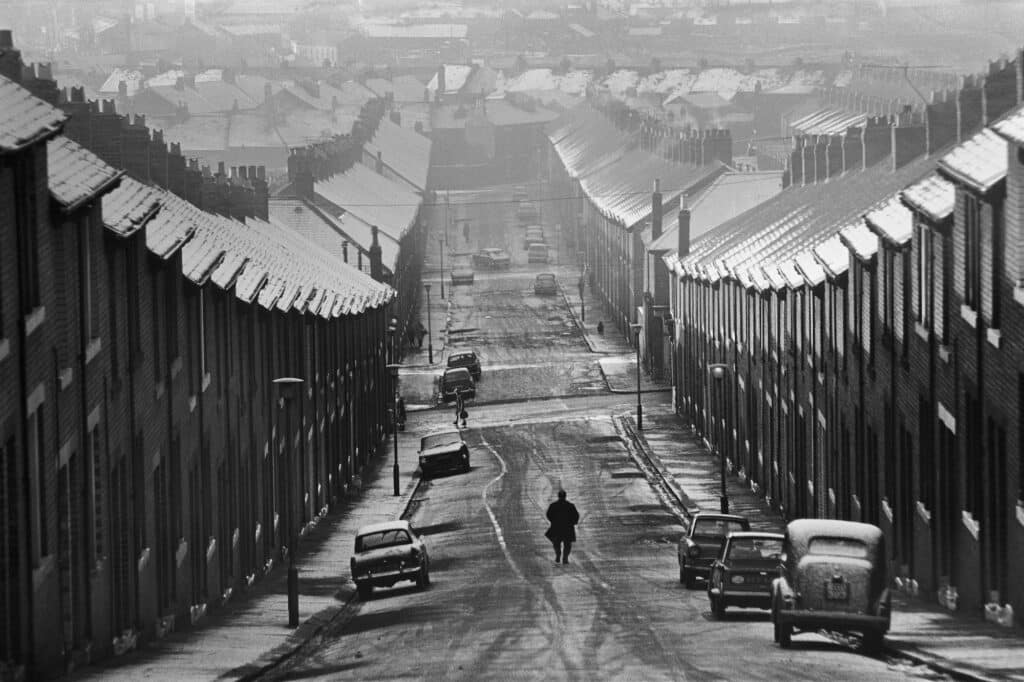
Byker is available now from Dewi Lewis, £40.00 – £95.00, in unsigned, signed, and special limited editions.

